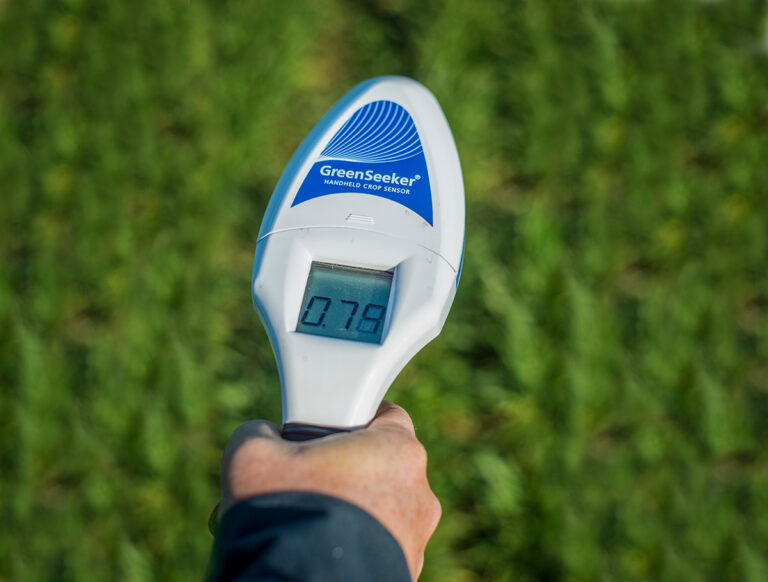The GreenSeeker sensor is an agricultural technology device used to optimize the application of fertilizers in crop fields. It measures the variability of crop vigor or “greenness” within a field and provides real-time data to help farmers make informed decisions about fertilizer application rates.
The GreenSeeker sensor operates based on the principle that plants reflect and absorb light differently depending on their health and nutrient status. It emits light in the near-infrared (NIR) spectrum and measures the amount of reflected light. By analyzing the reflected light, the sensor can assess the overall health and vigor of the crops.
Farmers typically mount the GreenSeeker sensor on a tractor or other farm equipment and drive it through the fields. As the sensor moves, it collects data on the crop’s reflectance and transmits it to a computer or handheld device for analysis. The data is then used to create a vegetation index, such as the normalized difference vegetation index (NDVI), which quantifies the level of crop vigor.
By mapping the variability of crop vigor across the field, farmers can identify areas that require more or less fertilizer. This allows for site-specific fertilization, where the application rates can be adjusted according to the specific needs of different parts of the field. It helps optimize fertilizer usage, reduce costs, and minimize environmental impacts by avoiding excessive fertilizer application.
Overall, the GreenSeeker sensor is a valuable tool for precision agriculture, enabling farmers to make data-driven decisions and improve resource efficiency in their crop production.


